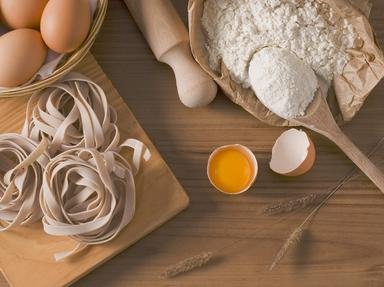Quiz Answer Key and Fun Facts
1. Which food preservation method consists of chilling foods, but not to the point of freezing them?
2. Which chilling process preserves food longer than refrigeration by turning the moisture in the food to ice?
3. Which food preserving method works on the premise that removing oxygen from a container can help to preserve the food within? (hint: this method could possibly help to clean your floors?)
4. One of the earliest forms of food dehydration, which preserving process uses salt, smoke, cooking, sugar and nitrates either in combination or as a stand-alone preserving 'ingredient'?
5. Similar to curing, which food preservation process works by cooking food, imparting flavour from burnt wood?
6. Which food preservation process serves to increase the shelf-life of a food via saturation in some kind of edible liquid (such as brine or vinegar)?
7. Probably the most well-known product preserved by this method is Spam. Which food preservation method uses heat, and the possible addition of an acidic agent, before sealing the food in a bottle or can?
8. Aspic is a dish where food is set into a meat stock gelatin. What is the name of this form of food preservation?
9. Which modern food preserving process involves exposing food to ionizing radiation to kill off bacteria, mould and insect pests?
10. Perhaps NOT a modern or common food preservation technique, which process is highly effective for preserving root vegetables, century eggs and some meats? (Hint: don't dig yourself into a hole thinking about this one!)
Source: Author
lones78
This quiz was reviewed by FunTrivia editor
WesleyCrusher before going online.
Any errors found in FunTrivia content are routinely corrected through our feedback system.


